02 May Learn the Fundamentals of Woodturning This Summer with Kevin Felderhoff
[vc_row css_animation="" row_type="row" use_row_as_full_screen_section="no" type="full_width"...

[vc_row css_animation="" row_type="row" use_row_as_full_screen_section="no" type="full_width"...
[vc_row css_animation="" row_type="row" use_row_as_full_screen_section="no" type="full_width"...
[vc_row css_animation="" row_type="row" use_row_as_full_screen_section="no" type="full_width"...
[vc_row css_animation="" row_type="row" use_row_as_full_screen_section="no" type="full_width"...
[vc_row css_animation="" row_type="row" use_row_as_full_screen_section="no" type="full_width"...
Join us every Friday morning...
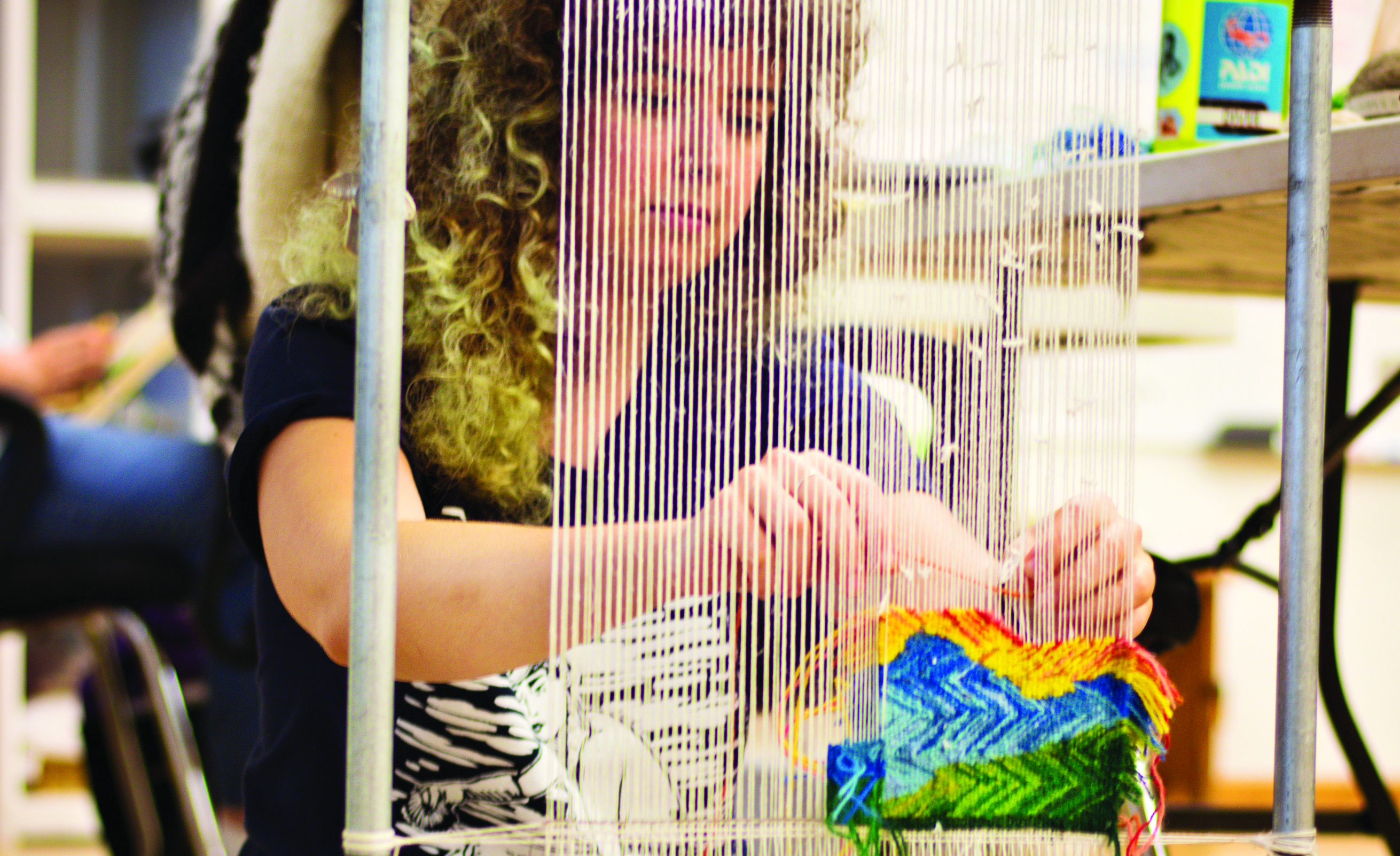
Having grown up just 12 miles down the road from Brasstown, many of Tommye Scanlin’s earliest 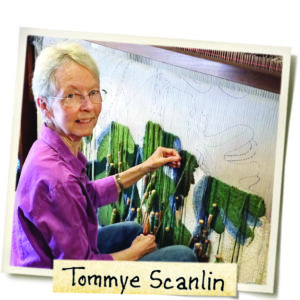 Folk School memories date back to her youth. In the mid-1960s, she and her boyfriend would often catch a glimpse of campus on their way to the drive-in movie theater in Peachtree. Since those drive-in, drive by days, Tommye’s Folk School story has come full circle.
Folk School memories date back to her youth. In the mid-1960s, she and her boyfriend would often catch a glimpse of campus on their way to the drive-in movie theater in Peachtree. Since those drive-in, drive by days, Tommye’s Folk School story has come full circle.
Tommye was officially introduced to Folk School classes by Bob Owens, a potter who also happened to be the head of the Art Department at North Georgia College where Tommye taught art and textiles. “I was learning about weaving at the time,” Tommye says, “trying very hard to figure it out on my own. In the summer of 1974, I had the chance to take a weaving class.” During her week as a student, she learned to read weaving drafts and added to her growing love of the craft. “With my newly gained knowledge, I doubled down on my weaving and within a year or so began to show and sell my woven works.”
...
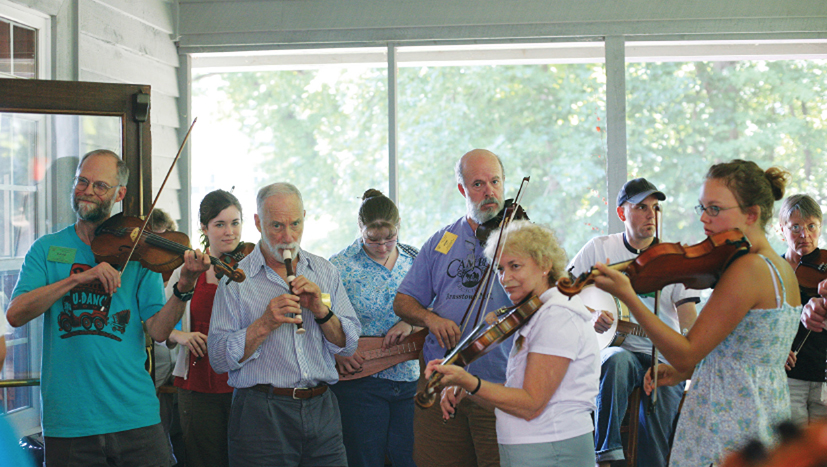 Dance Musicians Week students serenade folks as they enter the Dining Hall for lunch.[/caption]
[caption id="attachment_10346" align="alignright" width="256"]
Dance Musicians Week students serenade folks as they enter the Dining Hall for lunch.[/caption]
[caption id="attachment_10346" align="alignright" width="256"]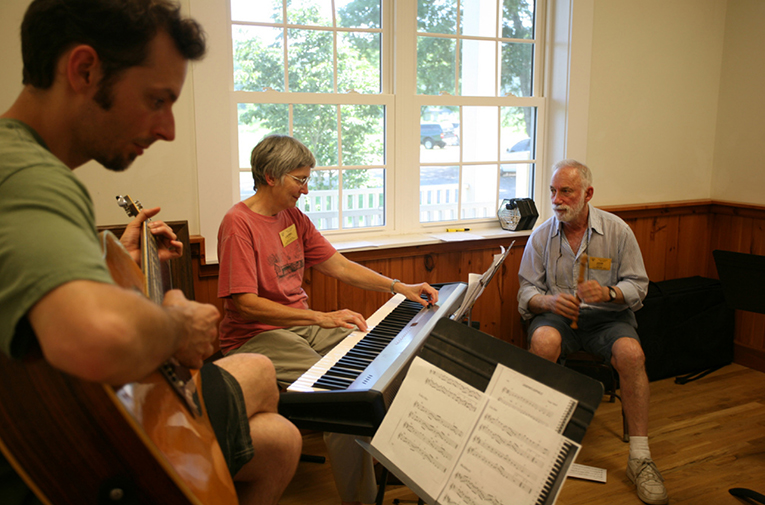 Student learn to play together as a dance band.[/caption]
In 2001, I received a message from Bob Dalsemer asking if I would join the instructor team for Dance Musicians Week at the John C. Campbell Folk School. Lifelong mentor, fiddler, caller and instructor extraordinaire David Kaynor had thrown my name out to Bob, the music and dance coordinator at the school at the time. At that point I was living in Western Massachusetts playing with David and the Greenfield Dance Band and had been devoting much of my time to being a touring singer songwriter. I had been in the contra dance scene picking tunes for about a decade. My musical influences were a woven patchwork of the folks that had surrounded me growing up in New York—Jay Unger, Lyn Hardy, Molly Mason, Sonny Ochs, Pete Seeger. Being born into a family of activists and labor organizers, community was most important and music was (and is) the vehicle and the glue that tied it all together. We were raised to believe that music and dance for music and dance’s sake is not enough. Community first.
[caption id="attachment_10347" align="alignleft" width="195"]
Student learn to play together as a dance band.[/caption]
In 2001, I received a message from Bob Dalsemer asking if I would join the instructor team for Dance Musicians Week at the John C. Campbell Folk School. Lifelong mentor, fiddler, caller and instructor extraordinaire David Kaynor had thrown my name out to Bob, the music and dance coordinator at the school at the time. At that point I was living in Western Massachusetts playing with David and the Greenfield Dance Band and had been devoting much of my time to being a touring singer songwriter. I had been in the contra dance scene picking tunes for about a decade. My musical influences were a woven patchwork of the folks that had surrounded me growing up in New York—Jay Unger, Lyn Hardy, Molly Mason, Sonny Ochs, Pete Seeger. Being born into a family of activists and labor organizers, community was most important and music was (and is) the vehicle and the glue that tied it all together. We were raised to believe that music and dance for music and dance’s sake is not enough. Community first.
[caption id="attachment_10347" align="alignleft" width="195"]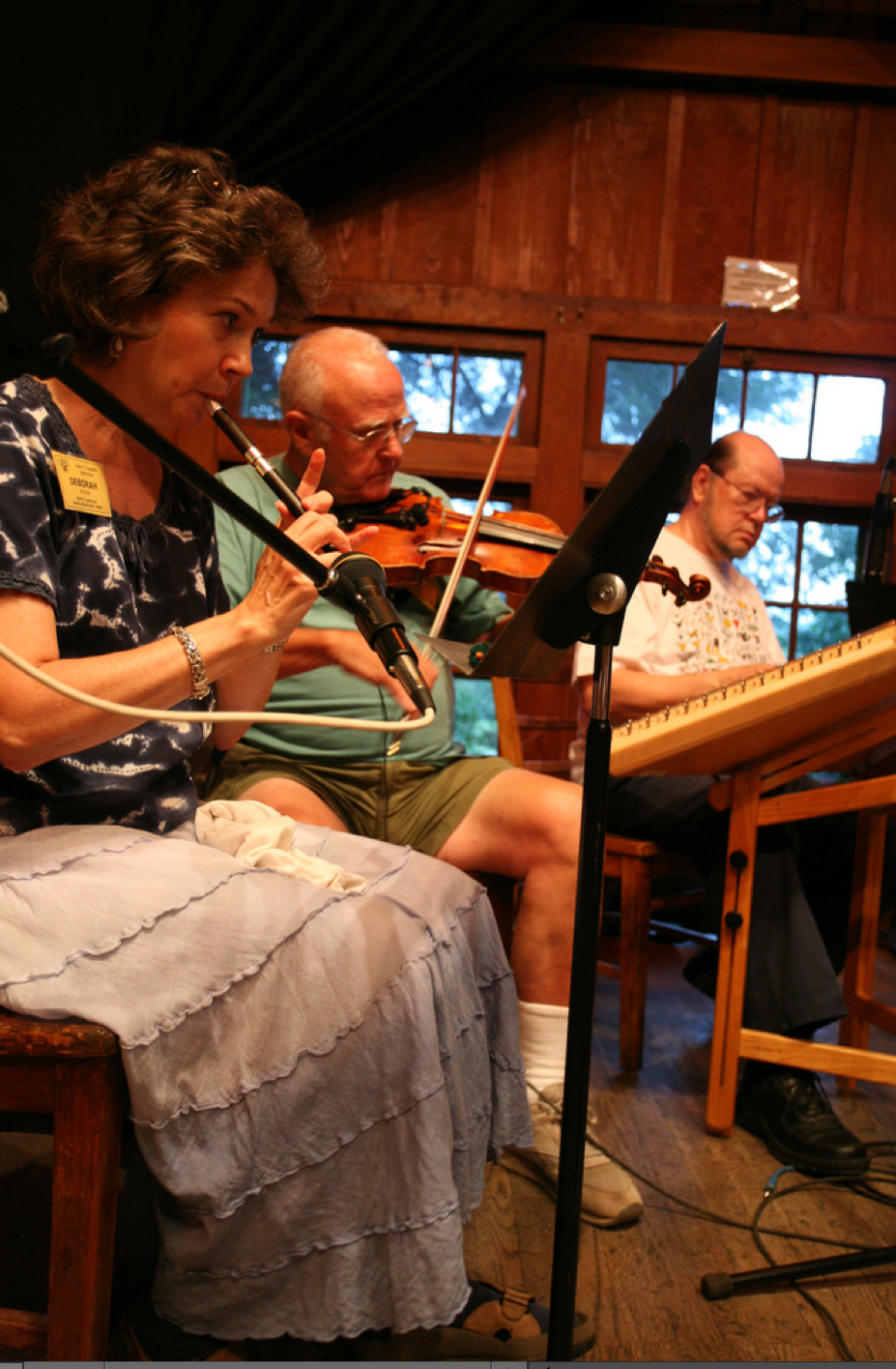 A band of DMW students takes the stage for one of the nightly contra dances.[/caption]
“Sing behind the plow!” is one of the great mottos of the John C. Campbell Folk School. Upon first look into the Folk School it seemed to be a kind of Brigadoon, a place stuck in time. Of course, I mean that in the best way. At that point in my life I was lamenting the waning of “community” in “community dance” and was excited to see a place nestled in the far west mountains of North Carolina, founded in the 1920s by the grandmother of the twentieth-century folk music revival, Olive Dame Campbell. Mrs. Campbell based the philosophy of the Folk School on the Danish tradition of folkenhojskolen which aims to foster culture and tradition through noncompetitive adult education—metalwork, quilting, woodwork, photography, cooking—happening alongside a rich tradition of music and dance, with folks from the surrounding Brasstown community invited to weekly concerts and dances and given special admittance into classes. I heard a student once comment “This place is like a kind of Whoville!” referencing the idealistic village from How the Grinch Stole Christmas. This is exemplified best by the very fact that each dance ends with a short goodnight song, sung with hands joined in a circle. The facilities are surrounded by hills, rivers, lush gardens, outdoor folky sculptures and paths through the woods. Best of all, the dancers are not contra “dancers”—they are mostly just folks from the community. Their gauge of a great experience is more based on who they got to see that night, not how slick the floor was or what tempo the band had played. I had found my place, or maybe the place found me!
A band of DMW students takes the stage for one of the nightly contra dances.[/caption]
“Sing behind the plow!” is one of the great mottos of the John C. Campbell Folk School. Upon first look into the Folk School it seemed to be a kind of Brigadoon, a place stuck in time. Of course, I mean that in the best way. At that point in my life I was lamenting the waning of “community” in “community dance” and was excited to see a place nestled in the far west mountains of North Carolina, founded in the 1920s by the grandmother of the twentieth-century folk music revival, Olive Dame Campbell. Mrs. Campbell based the philosophy of the Folk School on the Danish tradition of folkenhojskolen which aims to foster culture and tradition through noncompetitive adult education—metalwork, quilting, woodwork, photography, cooking—happening alongside a rich tradition of music and dance, with folks from the surrounding Brasstown community invited to weekly concerts and dances and given special admittance into classes. I heard a student once comment “This place is like a kind of Whoville!” referencing the idealistic village from How the Grinch Stole Christmas. This is exemplified best by the very fact that each dance ends with a short goodnight song, sung with hands joined in a circle. The facilities are surrounded by hills, rivers, lush gardens, outdoor folky sculptures and paths through the woods. Best of all, the dancers are not contra “dancers”—they are mostly just folks from the community. Their gauge of a great experience is more based on who they got to see that night, not how slick the floor was or what tempo the band had played. I had found my place, or maybe the place found me!
 Karen teaches "Classical Stained Glass Panels" in the Jewelry Studio at the Folk School.[/caption]
Karen teaches "Classical Stained Glass Panels" in the Jewelry Studio at the Folk School.[/caption]
CP: Why do you like glass?
KR: Glass is a magical, magical, magical medium. Never a liquid or a solid, glass is always in between those two states of matter. Through heat, you can control its characteristics. I believe that there are endless possibilities in glass as a creative medium. It is a wonderful combination of "science meets art." The way you see glass is all about the light.
CP: What made made you want to be a glass artist?
[caption id="attachment_8864" align="alignleft" width="184"]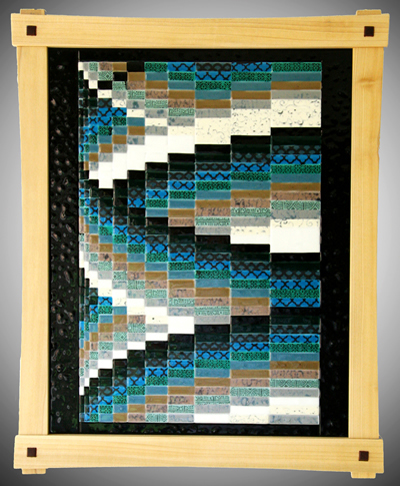 Bargello-inspired piece[/caption]
Bargello-inspired piece[/caption]
KR: I was into many crafts and I especially loved quilting - piecing things together. For Valentine's Day in 1981, my husband gave me a pair of grozing pliers and a glass cutter and encouraged me to try glass. Working with glass filled my soul, so I started my love affair with cold glass techniques (like stained glass) etched under 1000 degrees.
From there I wanted to try it all, so I learned warm glass techniques (like fusing, fritting, and ground glass) and plastic glass which is glass at a temperature above 1650 degrees (like beading). Now I have been working and teaching glass for over 30 years. My studio out of Huntsville, AL is Earthstar Glass.
CP: What inspires you?
[caption id="attachment_8866" align="alignright" width="192"]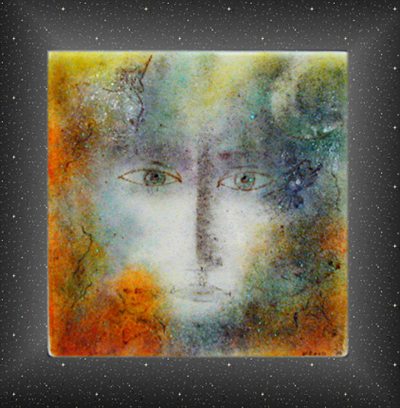 An example of Powder Painting achieving a watercolor look by Karen Reed.[/caption]
An example of Powder Painting achieving a watercolor look by Karen Reed.[/caption]
KR: Creative challenges. I take inspiration from other media, like oil painting, watercolor, pastels, quilting, and think: "I would like to figure that out in glass."
I also take technique driven inspiration from different cultures around the world, I get lost in a subject. For example, I look at Balinese Folk Art and wonder "how can I make that in glass?"
CP: Functional or Decorative?
KR: It's a balance. As an independent studio we need to do functional work and custom pieces to fund our other more conceptual and creative pieces. My creative work is what goes in the galleries, the functional and smaller-sized work pays the bills. Small will sell better, but I love doing the big pieces.
CP: Who is your favorite glass artist?
KR: Harry Clarke (1889 -1931) a master of stained glass from Ireland.
CP: What’s the most meaningful piece you’ve ever made?
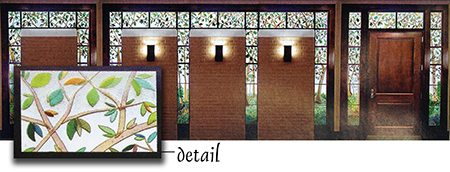
KR: The 57 fused glass panels for the chapel in Madison, AL. In 2012, I was commissioned by three siblings to create an installation piece in a hospital chapel to commemorate their parents. Because of a lead ban, you cannot put lead in a hospital, so the siblings had a hard time finding an artist to hire. I have been fusing glass over 25 years and was honored and delighted to be able to work on such a commission. I loved every second of it! They wanted something soothing, non-denominational and artistic with nature as a theme - a place of retreat for everyone to enjoy.


